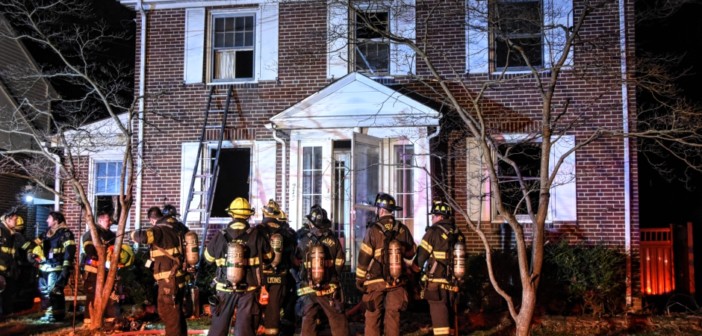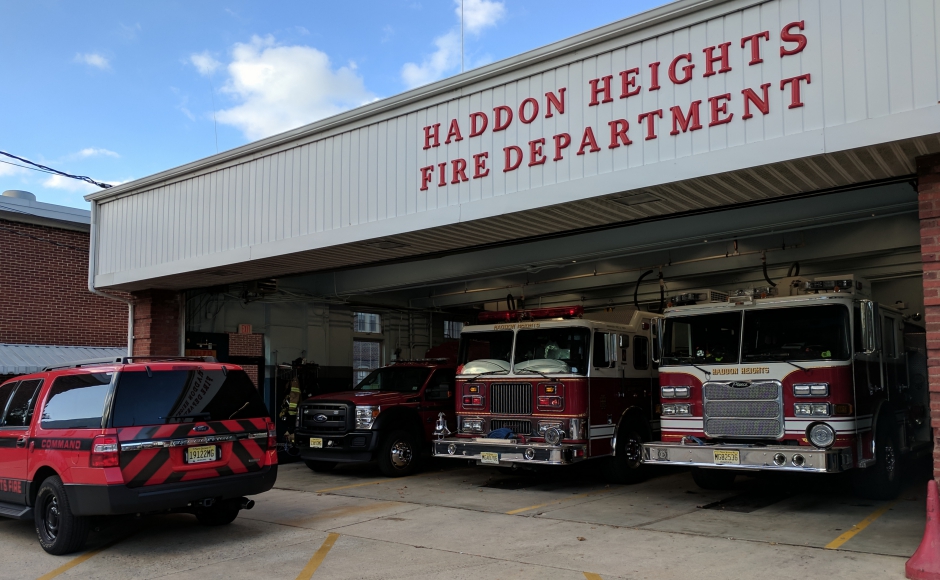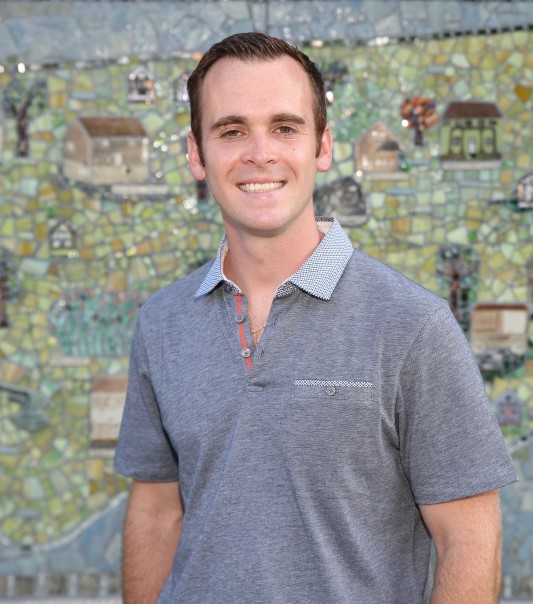All three communities will partner on a $75,000 state grant that will explore how they fund and staff their emergency services operations. Officials say it could be a watershed moment in towns where unpaid help is hard to come by.
By Matt Skoufalos | July 15, 2022
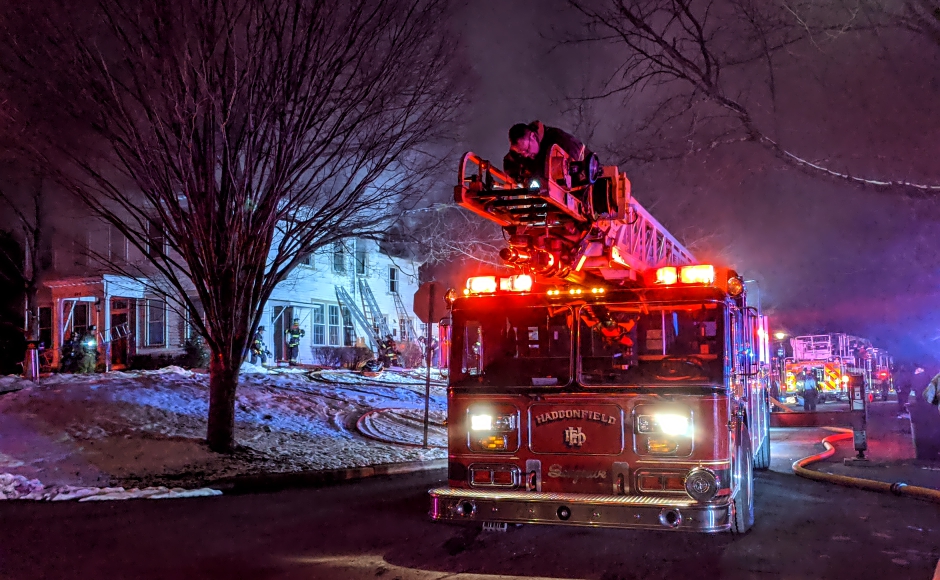
Firefighters respond to a call at a historic Haddonfield home Feb. 12, 2021. Credit: Matt Skoufalos.
Neighboring Haddonfield, Haddon Heights, and Barrington will undertake a study that could identify solutions to long-term staffing concerns in the provision of local fire and emergency medical services across all three communities.
Last week, the New Jersey Department of Community Affairs (DCA) announced some $2.4 million in Local Efficiency Achievement Program (LEAP) grants to 19 local and county government agencies across the state.
Of those, the Haddonfield municipal government was awarded $75,000 to undertake its “Tri-Borough Emergency Services Study and Implementation Plan,” which will “fund the study of emergency service operations and develop viable short- and long-term solutions,” with Haddon Heights and Barrington, as per a borough press release.
Interest in the grant was sparked by “various proposals for paid firefighters from multiple individuals within Haddon Fire Co. No. 1 and the Haddonfield Ambulance Association,” according to the release.
“In January of 2022, after confirming interest and similar challenges faced by Barrington and Haddon Heights officials, Haddonfield acted as the lead agency, spearheading the application,” it reads.
Haddonfield was the only recipient of a LEAP grant in Camden County, and the only statewide recipient of a DCA challenge grant, which is awarded to study projects that explore shared services and cost savings measures at the local government level.
Haddonfield Mayor Colleen Bianco Bezich said in a statement that the grant award reflects the local commitment to its first responders, and “makes it possible for us to address the realities of firefighting and EMS in meaningful and productive ways.”
Haddonfield Fire Chief Lou Frontino said his station, Haddon Fire Co. No. 1, has seen a trend of declining volunteerism in recent years that has underscored the need for some alternative solution to its staffing issues.
Although the department, which is one of the oldest active volunteer fire companies in America, has a complement of 41 active members, Frontino said more help is needed. As recently as 2015, about half of those firefighters hailed from out of town.
In a community like Haddonfield, where average homes exceed a half-million dollars and households earn $150,000-plus annually at median levels, it can be challenging to source volunteers willing to undergo the 200 hours of training required to be a firefighter/EMT, much less those who have the freedom to head out to an emergency call at a moment’s notice.
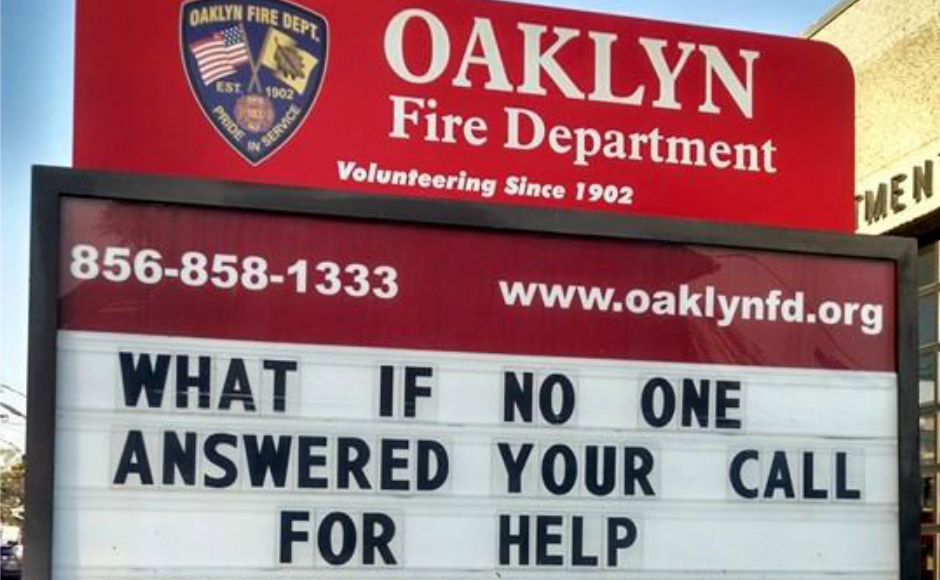
The Oaklyn FD marquee describes a shortfall in volunteerism among local fire companies. Credit: Matt Skoufalos.
“We need either more volunteers, which are hard to come by anymore because of the requirements that are needed to be a firefighter, or nobody has the time, which I don’t blame them either,” Frontino said.
“I don’t know where it’s going, which is why they’re doing the study.”
In any fire department, responding to calls for service during the daytime, when most volunteers also work paid jobs, is the biggest challenge.
Fewer calls typically come through at night, but for companies that rely on unpaid volunteers, staffing can be an issue at any hour of the day.
Neither are calls for service limited to the municipal borders of a department. Although Haddon Fire Co. typically covers communities that border Haddonfield, under the terms of Camden County mutual aid agreements, its crews can be assigned to respond anywhere from Camden City to Winslow Township.
“A bedroom community like ourselves, we need the coverage,” Frontino said. “You need firefighters in the firehouse at all times, whether they’re paid or stipend.
“We’re doing the best we can with what we have, and that’s why we’re looking into other options at this point,” he said.
In Haddon Heights, Fire Chief Michael Kinky has for the past few years tried to broker a shared service agreement with neighboring departments in Barrington and Audubon in order to establish a paid daytime fire crew that could respond to calls for service in all three towns. He found support in neither community for the plan.
Haddon Heights staffs its fire department with a full-time paid crew that responds automatically to emergencies beyond its borders, including those in neighboring Barrington and Audubon, and Kinky believes some of that cost should be shared.
“We’re in a station where the Haddon Heights taxpayer is paying a lot of money for a paid crew,” the chief said. “We’re called into other towns regularly to handle any run-of-the-mill incident. Other towns aren’t putting forth the same commitment.”
In the past four years, the Haddon Heights Fire Department has fielded a minimum of 700 calls for service annually.
Its personnel are on the first-alarm call for eight other towns in addition to Haddon Heights.
As recently as five years ago, Kinky said the department revisited a 20-year-old study that made the case for consolidating the Barrington and Haddon Heights fire services, which he said “fell apart at the political level.”
The need to provide adequate fire service in both communities hasn’t diminished in that time; what has persisted, however, is the complicated view through which volunteer and professional firefighters perceive their work.
The National Fire Protection Association estimates that some 70 percent of fire departments across the country are registered as volunteer institutions, and that volunteers comprise 54 percent of active firefighting personnel (NFPA also notes that 34 percent are career firefighters with another 12 percent paid per call).
The legacy of volunteer firefighting service is a proud and entrenched institution built on family and community lineages; many local fire companies were founded before the communities in which they still operate were incorporated. The notion that consolidation could threaten those institutions, or create another that supersedes them, is a real and intimate obstacle to any organizational restructuring that could come with new staffing solutions.
Haddon Heights Mayor Zach Houck, who served as a volunteer firefighter for years before becoming a career lieutenant with the Cherry Hill Fire Department, described the fear among some volunteers that paid or consolidated departments would force them out of the same opportunities.
“That’s a lot to think that they’re going to lose their identity,” Houck said. “Change scares everybody. And then you do get into components of who’s going to be the chief and the officers and dictate what we do. Ego is another powerful driver of things.”
In describing the emotional work that must be done within these organizations to embrace some of the changes that might be necessary for their survival, Houck referenced management consultant Peter Drucker’s famous quote that “culture eats strategy for breakfast.”
“Even the newest members of the organizations have so much pride,” he said.
“They see our past members built this community from the ground up.
“They lived here before Haddon Heights was called Haddon Heights; before Barrington was called Barrington.
“They physically built this town.
“You need culture,” Houck said. “At the same time, you can let that blind you to some extent.
“You can be ignorant to the fact that you have internal issues.
“It takes a self-sacrificing leader who can motivate and capture the minds and the hearts of their people to actually look differently [at the issue],” the mayor said.
“I think there’s opportunities.”
Both Houck and Kinky also expressed hope that the results of the fire study could provide motivation for shifting tactics as call volumes continue to climb in every community fire service.
In the past 20 years alone, the shift in fire departments handling EMS calls has added to that demand, but so has an uptick in motor vehicle crashes, and the general prevalence of home alarm and monitoring systems, which can also create false alarms. All of these put added demands on volunteers.
“Looking at the EMS staffing crisis that’s not just hitting small, bedroom communities, but everywhere, even the big towns, the same goes with volunteer [firefighters],” Houck said.
“How do we continue to provide the same level of protection we’ve been providing for years, and at the same time, prepare for what’s going to happen 20 years from now? If we wait, we’re just going to become reactive instead of proactive.
“Having $75,000 to study not just the call volume and deployment, but look at the finances and project out how do you make this sustainable and not just an operational nightmare,” he said. “Little towns like us can’t afford to have a GIS analyst on hand full time. A grant like this is going to put a lot of that information in their hands. Let’s see what the data is telling us, and how does that influence our decision-making going forward.”
Regardless of the results of the study, Kinky worries that, without a course correction, short-staffed departments are setting themselves up for a major tragedy. The mutual aid system is meant to be a safety net, he said, not the baseline operating procedure.
“When it comes to fire/EMS, do we really want to wait for something terrible to happen?” Kinky said. “How much do we want on our conscience when there’s a solution that could fix this?
“We’re trying to extend the life of the volunteer service while also providing opportunities for full-time employees,” he said. “There’s going to be a moment of reckoning for a lot of people out there. Being reactive is putting off truthful, inevitable problems.”
As the lead municipality in the study, Haddonfield said its local officials will meet with those from Haddon Heights and Barrington to “review the grant parameters,” with more information to follow in August.
Stick with NJ Pen for updates.
Please support NJ Pen with a subscription. Get e-mails, follow us on Facebook, Twitter, and Instagram, or try our Direct Dispatch text alerts.

